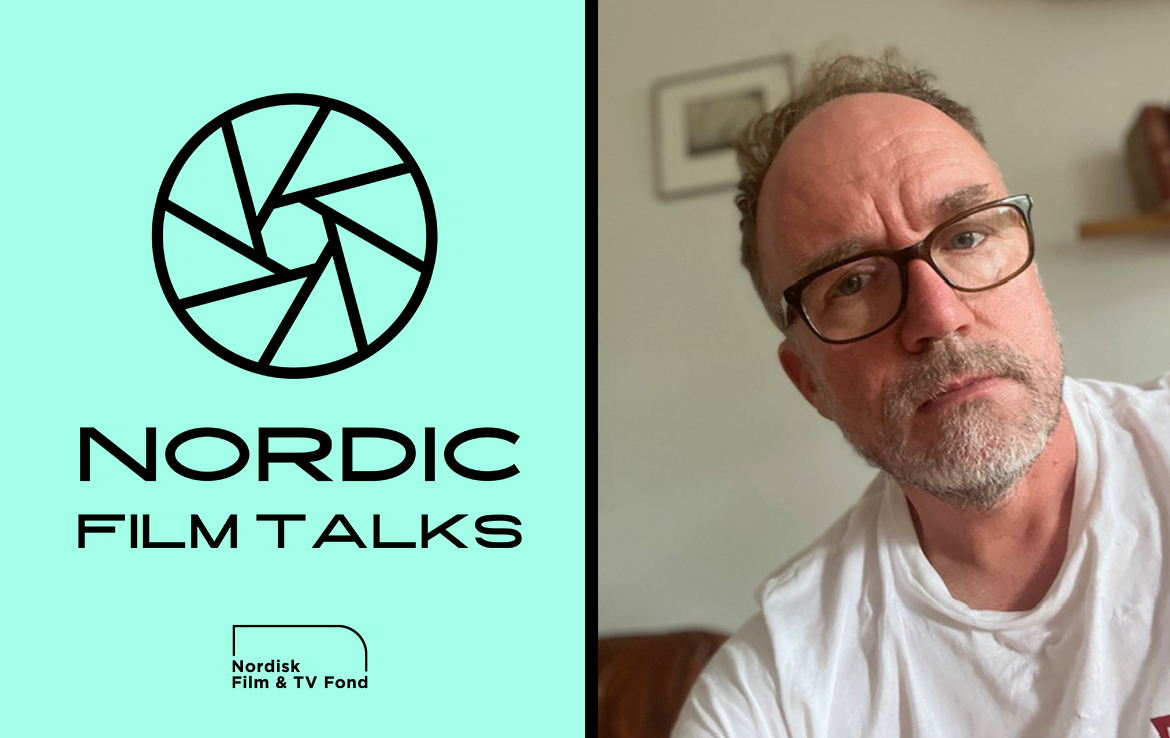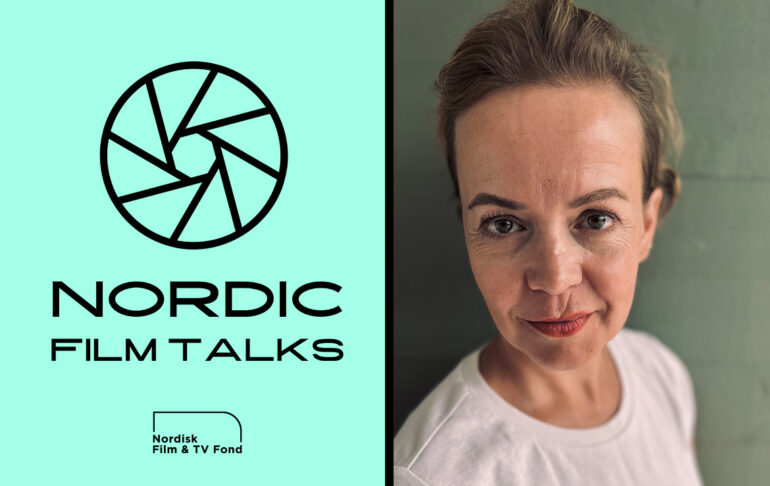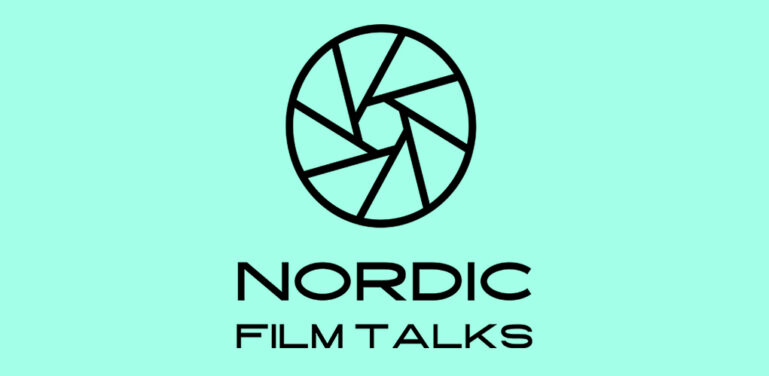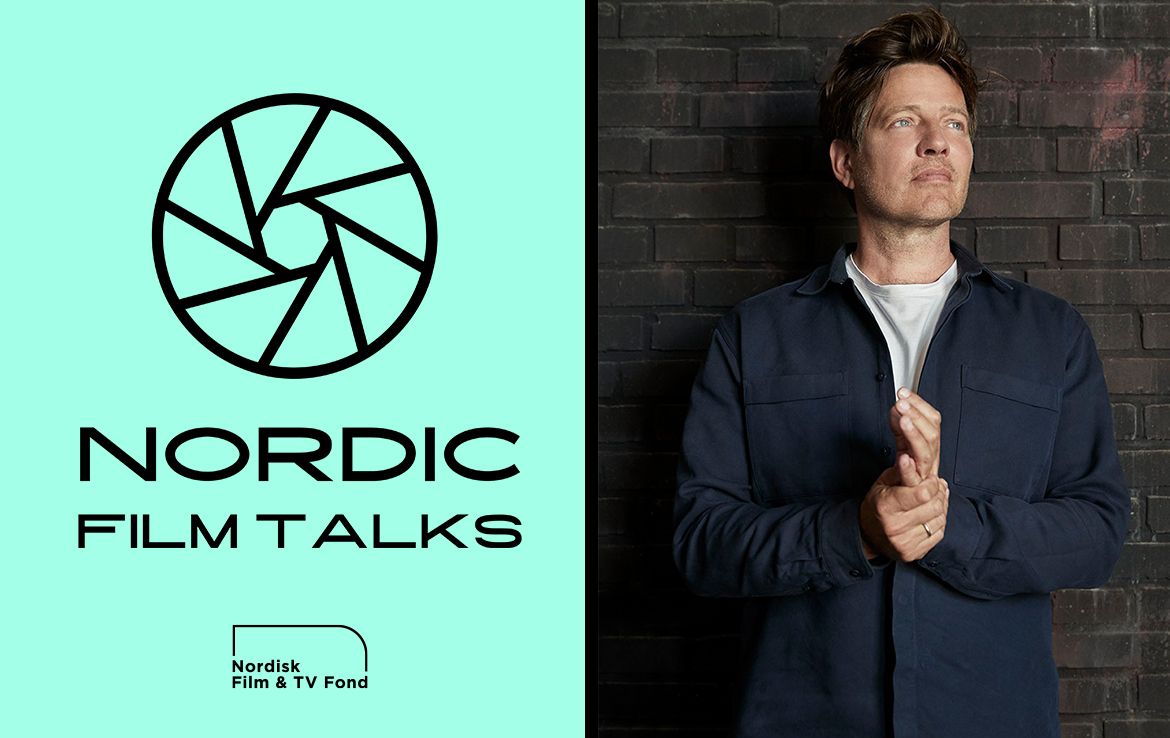
WRITTEN BY: Wendy Mitchell
The Swedish writer-director wanted to avoid biopic cliches for The Swedish Torpedo and instead find a modern approach to a very feminist story from 1939.
Sally Bauer was a woman ahead of her time – in 1939, she was a single mother who against the odds became the first Scandinavian person to swim across the English Channel.
Despite her big achievement, Bauer was never a household name in Sweden - now she’s the subject of Swedish writer/director Frida Kempff’s new film The Swedish Torpedo (Den svenska torpeden).
Kempff first heard about Bauer reading Sara Stridsberg’s 2004 novel Happy Sally. “I thought she was a fiction character, but when I started to Google it, I realised Sally was actually a real person who achieved this amazing feat.”
There wasn’t much info in the history books about Bauer, but in a small regional library, Kempff did find one book that was Sally’s personal reflections on the year before her swim in 1939. “I felt that I should do something. I should really drag her out into the spotlight, and celebrate what she has done,” Kempff says in the latest episode of the Nordic Film Talks podcast.
The director continues: “It really upset me in a way, because you grow up as a young girl and you don't think there are any role models. We have Pippi Longstocking in Sweden, and she's not a real person. It’s so important that we highlight these women.”
Now the spotlight will be on Bauer as The Swedish Torpedo premieres in Toronto’s Centrepiece section on Sept. 12. Urban Sales handles international sales.
It was important for Kempff that she and co-writer Marietta von Hausswolff von Baumgarten told Bauer’s story in a way that wasn’t a typical biopic. “For me it was very important from the start to not have it as a biopic. I really wanted to have that artistic choice and the freedom of doing something that could apply for me and my voice. I think you can never do a 100% correct portrait of a real person. It's not a museum film. I wasn't interested in that. I think it's interesting to look at the history and tell something about today as well,” she says.
“Sally was so ahead of her time. She was a single mother, unmarried, with big dreams of swimming big oceans. For me, what really connected me to the story was that she was a mother. Women still have issues with pursuing our dreams. It’s still a modern story in that sense. That really grabbed me.”
Kempff, who has a documentary background with films like Bathing Micky (Micky Bader) **(her short that won a Cannes jury prize in 2010) and Winter Buoy (Vinterboj, 2015), also involved Bauer’s descendants early on. “It was important for me to talk with the family. So I called her son, and I pitched the project for him, and he said yes. I got his blessing. He actually has been very involved - he read the different versions of the script, and he was also on the shoot. It was a tearful moment.”
She also eschewed traditional biopic formats that might have shown Bauer as a young girl learning to swim - instead she jumps right into Bauer as a 30 year old single mother who attempts to swim the English Channel in 1939, just days before World War II breaks out.
“I started to make films when I became a mother,” she says. “I think a lot of directors do films about their childhood or their teenage years. But my driving force started when I became a mother. That was also a conflict, because I was ‘supposed’ to stay home and take care of my child, and I couldn't do both. I thought it was so interesting in this story to start coming up to this dream a year before and follow her. How will she make it? In what way? How much will she fight, and in what way will she fight? What boundaries are there? I thought it was interesting to have that time limit of a year.”
The film shot mostly in Estonia - which still has some older, non-renovated buildings that could represent 1930s Sweden. “I was able to shoot 360 degrees in these abandoned places. The set designer and me and the DOP, we could really focus on the environment. That also made it not limited. We could really walk around with the camera, and we could really present the world of Sally's life.” They also shot near the famous cliffs of Dover in the UK, and two days at the water tank at Studio Fares in Trollhättan, Western Sweden.
The film was a much greater physical challenge than Kempff’s debut fiction feature Knocking (Knackningar). “The ocean and the weather really was a challenge because you don’t have the space to move around the shooting days. I would be saying to my first AD: ‘What happens if there’s going to be a storm?’, and he was like: ‘Let’s not talk about it.’”
She continues: “I come from documentary, so I wanted to push the actress, Josefin [Neldén], so that she could really feel the wind and the weather and how hard it was, and the salt and the cold. So I wanted to do as much as possible on location.”
On the surface, Kempff’s first fiction feature film, Knocking, was a very different kind of story - a claustrophobic thriller about a woman who comes out of a mental hospital and starts hearing strange sounds in her apartment building. It premiered in Sundance’s Midnight section in 2021.
The filmmaker can see some similarities in the very different films. She says with a laugh: “There is some water in Knocking as well. There's always some water in my films. But I think there are similarities because I always work with one perspective. We are always with the main character. What Sally feels, and what Molly felt in Knocking, is this claustrophobic feeling. People are pushing you to do things you don't want to do. They call you crazy or tell you you can't do things. I think that I always come back to claustrophobia versus freedom.”
In the Nordic Film Talks full podcast interview, Kempff also talks about finding video footage of the real Sally Bauer in 1939; what she gained as a filmmaker from taking part in the prestigious Torino ScriptLab; and how she drew on inspirations as diverse as Rocky and Portrait of a Lady on Fire (Portrait de la jeune fille en feu) **for The Swedish Torpedo.
Listen to the podcast here:
The Nordic Film Talks is available for free on Nordisk Film & TV Fond’s website’s Industry Insight section (CLICK HERE) and distributed through major podcast platforms including Spotify, Apple Podcasts, iHeartRadio, Amazon, Castbox, Deezer, Podcast Addict, Podchaser and JioSaavn.



